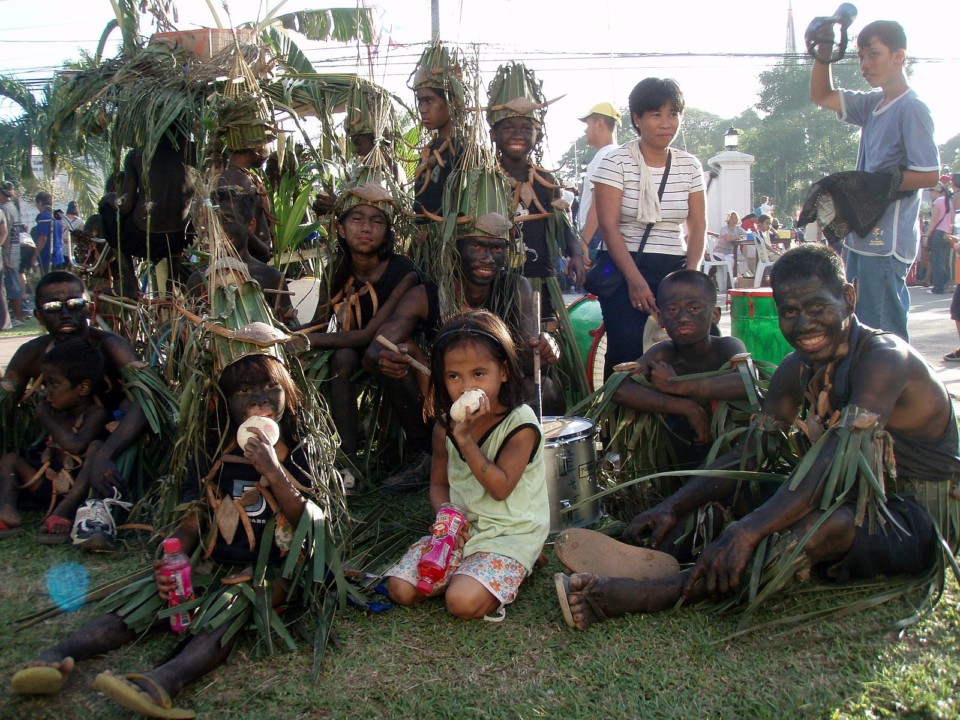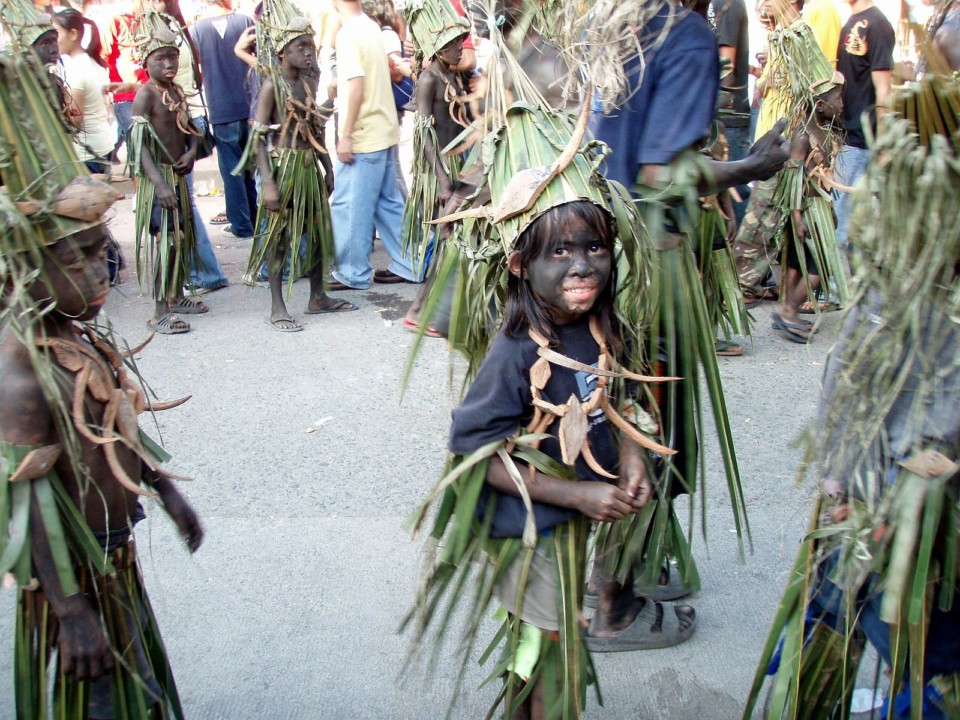In these politically correct times, it’s generally agreed that “blacking up” to imitate a darker-skinned race is, quite literally, beyond the pale.
However, in at least one Filipino city, it’s a central part of an annual celebration that’s known as “The Mother of all Festivals”.
For at least nine days every January, the streets of Kalibo, on the north coast of Panay Island, are filled with revellers celebrating the Ati-atihan. The name means “to be like Atis” — the aboriginal tribes of the region.

The festival is believed to date back to the year 1200AD when a group of Malay chieftains from Borneo fled the tyrant Sultan Makatunaw.
Taking to the sea without maps or charts, they eventually found themselves making landfall on Panay Island. Datu Puti, the leader of the group, approached the chief of the local Ati people to negotiate the purchase of some land.
Eventually a deal was agreed, the new arrivals secured the fertile plains in exchange for some bales of cloth, a collection of brass basins, a golden hat (sakalot) and a particularly long necklace for the chief’s wife.
Some years later (despite their impractical headwear and jewellery) the Atis were starving following a bad harvest. Swallowing their pride, they came down from the mountains and appealed to the Malays for help. Perhaps feeling guilty at how cheaply they’d secured the island’s most productive land, the settlers obliged.
The Atis were so delighted by this generosity, they danced and sang in joyful abandon. This demonstration of gratitude obviously made a great impression on the Kalibonons, as from that day on they’ve recreated the event with blackened faces and extravagant costumes.

Preparations for the Ati-atihan pretty much get underway as soon as Christmas is over, but the official nine-day celebration always culminates on the third Sunday of January with a masquerade ball and torchlight procession.
Since the Spanish arrived in the Philippines, the festival has taken on a Catholic flavour as a celebration of the Santo Niño, or Baby Jesus. This, however, doesn’t get in the way of the drinking and dancing. The main religious element is known as “paeapak” (to receive footsteps) which involves being touched by the feet of a Baby Jesus statue at the St John the Baptist Cathedral.
But the real business takes place on the streets, with scenes that are inevitably compared to Brazil’s Mardi Gras carnival. To the accompaniment of cries of “Hala bira! Viva Santo Niño!” (Go get ‘em! Long live the Santo nino!) the dancing never stops.
The extravagantly costumed dancers are organised into “tribes”, who compete for cash prizes and prestige for their neighbourhoods. Their traditional style of dance, accompanied by drums and lyres, is known as “sad-sad” — despite it being the absolute embodiment of “happy-happy”.
Despite the long days of dancing and drinking, the fun doesn’t end with the closing of the Ati-atihan, as crowds of revellers head off to nearby Boracay to continue the party at the beach.
It’s worth noting that thousands of Kalibonons living out of town come home for the festival, even in preference to spending Christmas with their families. For this reason hotels and flights tend to get booked up early — planning ahead is essential if you want to join the fun.
Cebu pacific flies to Kalibo from Manila, Cebu, HK and Seoul.

Comments are closed.